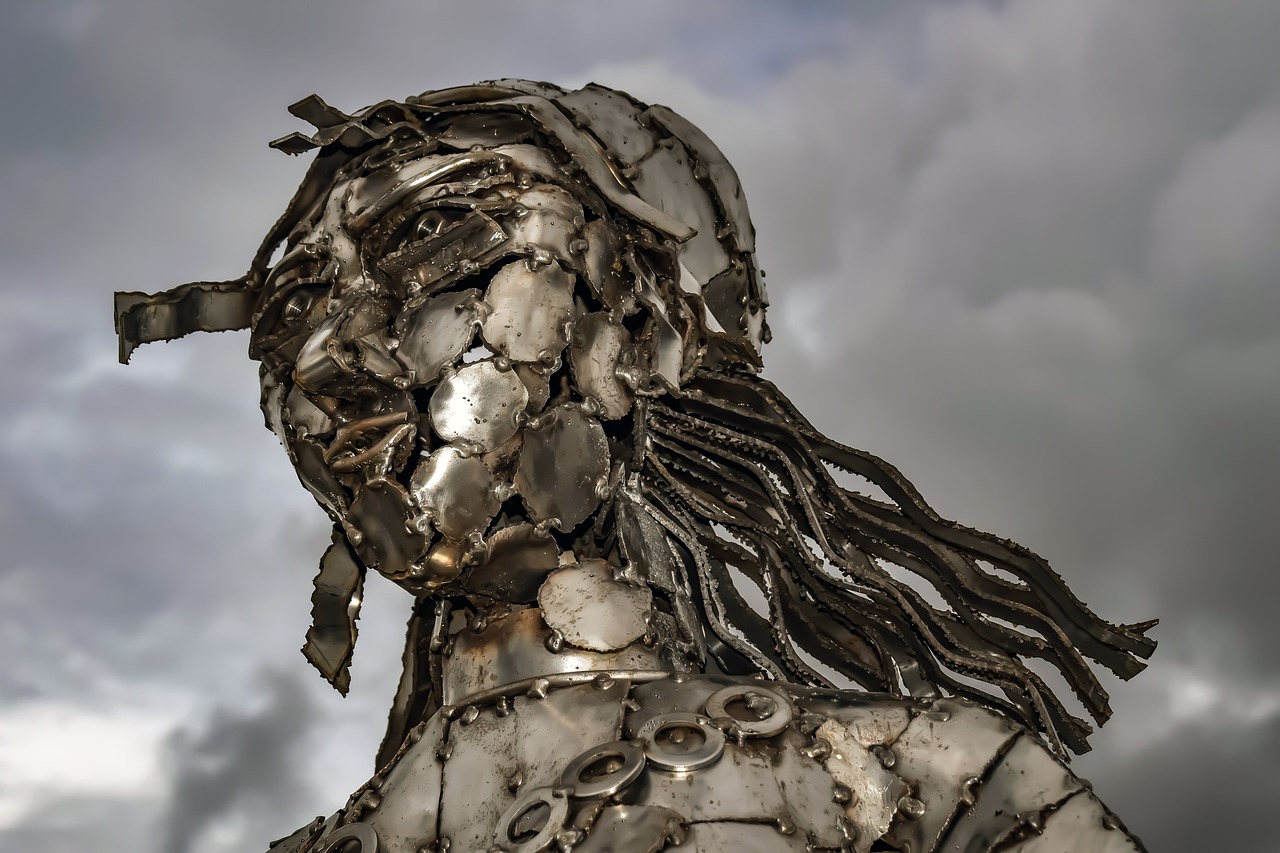Zeus: The Supreme Olympian God
Zeus, traditionally known as Jupiter or Jove, holds the prominent title of King of the Gods, governing the sky, weather, order, destiny, and fate. Often represented as a stately man with a robust physique and a dark beard, his iconic symbols include a lightning bolt, a regal scepter, and an eagle.
Myths of Zeus
As the youngest offspring of the Titans Kronos (Cronus) and Rheia, Zeus faced a chilling childhood. To escape being consumed by his father, Kronos, who had a grim practice of swallowing his children, Zeus was hidden away by his mother. In a clever ruse, Rheia provided Kronos with a rock wrapped in swaddling cloth, enabling Zeus to evade his father’s deadly grip.
Raised in seclusion on Mount Dikte in Crete, Zeus was nurtured by nymphs, who provided him with milk from the goat Amaltheia. His cries were muted by the Kouretes—a band of armored warriors who danced, creating a cacophony that masked his sounds. As he matured, Zeus allied with the goddess Metis, who conjured a potion for Kronos, ultimately freeing Zeus and his siblings from their father’s belly.
With newfound power, Zeus and his brothers decided the dominion of the universe by drawing lots: he obtained the heavens, Poseidon the sea, and Hades the underworld. Fearing a prophecy that foretold Metis’s child would dethrone him, Zeus took drastic measures, swallowing Metis while she was pregnant. Later, Athena emerged fully grown from his head.
Zeus and his sister Hera, queen of the heavens, wed after a dramatic courtship involving Zeus disguising himself as a cuckoo. However, their partnership was marked by constant discord.
In a significant myth, Prometheus, a figure of rebellion, fashioned humanity and gifted them fire, provoking Zeus’s wrath. The god’s punishment for Prometheus led to the creation of Pandora, the first woman, who came with a jar that unleashed various calamities upon mankind.
As humanity descended into depravity, Zeus decided to cleanse the world with a monumental flood, sparing only Deukalion and Pyrrha, who would repopulate the earth by throwing stones that transformed into women and men.
Gaia, angered by the Titans’ confinement, summoned Giants to challenge the Olympian gods. Zeus vanquished their leader with fierce lightning strikes, but later faced a formidable foe in Typhoeus. After an intense battle and an initial defeat, Zeus recovered his strength and overcame the monster, imprisoning him under Mount Etna.
Zeus was known for his numerous affairs with mortal women, transforming into various forms—such as a swan for Leda and a bull for Europa—to seduce them. His most cherished mortal child was Herakles, whom he ultimately deified.
He was just in his punishment of the wicked, delivering retribution to infamous figures like Tantalos, Ixion, and Lykaon for their transgressions against the divine order.
Symbols and Attributes
Zeus’s primary emblem was the lightning bolt, used as a spear-like weapon. Additional symbols linked to his identity include a scepter, throne, eagle, and sometimes Nike, the winged goddess of victory. He was typically portrayed wearing robes but occasionally depicted nude, often crowned with olive wreaths.
Sacred Animals and Plants
Zeus held the eagle and bull as sacred. He kidnaps Ganymede and Europa in these animal forms, respectively. The evergreen holm oak and olive trees were also sacred to him, with the latter being significant at the Olympic Games, where victors received olive wreaths.
The Retinue of Zeus
As the preeminent deity, Zeus was accompanied by many lesser deities. His throne was protected by four winged spirits symbolizing Strength, Rivalry, Victory, and Force. Hermes served as Zeus’s messenger, while Iris delivered messages of command. Themis, goddess of law, shared counsel with Zeus, along with their six daughters—The Fates and The Seasons—who managed the universe’s order.
His palace included Hestia, who maintained the sacred fire, and Metis, who, despite being swallowed, lent wisdom to Zeus from within. Ganymede and Hebe served as cupbearers, offering ambrosia and nectar during celestial feasts. Notably, the Harpies, often referred to as Zeus’s hounds, were tasked with punishing mortals.
Zeus employed the winged horse Pegasus to carry his lightning bolts and commanded chariots drawn by immortal steeds.
Family of Zeus
Born to Kronos and Rheia, Zeus was sibling to Poseidon and Hades and married to Hera with whom he fathered Ares, Hebe, and Eileithyia. His many unions produced numerous offspring, including Persephone with Demeter, and divine figures like Athena, who sprang from his head.
Zeus’s extensive family tree features significant names like Herakles and Perseus, alongside countless mortal heroes.
Conclusion
In analysis, Zeus embodies numerous aspects of authority, law, and nature, signifying the complexities within Greek mythology. He represents the archetype of royal divinity—central to the Greek pantheon and deeply revered across ancient cultures.



